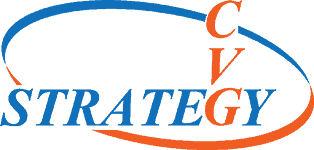
Freeze-Thaw MIL-STD-810 Method 524 is used to evaluate equipment’s ability to withstand transitions in temperatures through the freeze point in the midst of ambient temperatures and when transitioned from environments of varying temperatures. Effects of exposures to these environmental conditions include: binding or distortion of parts, failure of seals, adhesives, and materials, and fogging of optical equipment during the freeze-thaw phenomena.
Test Procedures for Freeze-Thaw
Three laboratory test procedures are available in the test standard for this MIL-STD-810 test method. All are to be conducted in a laboratory test facility.
- Procedure I – Diurnal Cycling Effects. This procedure simulates exposures that vary from slightly above and below the freeze point. This test simulates night time freezing and daytime warming.
- Procedure II – Fogging. This procedure is intended for equipment that is designed to not fog or has built in capabilities to de-fog optical components. Typical applications would include aircraft stores, such as missiles, moving from a cold to warm environment.
- Procedure III – Rapid Temperature Change. This procedure simulates equipment being moved from a warm to cold environment and then being returned to warm causing condensation to occur on the equipment.
Test Parameters
Temperatures ranges for testing normally cycle between 41 °F and 14 °F (+5 °C and -10 °C) for diurnal cycling and 14 °F (-10 °C). These temperatures can be varied as required to effectively simulate the desired environmental effects.
As with other MIL-STD-810 methods, the use of appropriately pure water is important for representative testing. Chemicals such as calcium carbonate, which are often found in water supplies can clog nozzles used in providing water vapor or sprays. Guidance for water purity can be found in Part 1 paragraph 5.16 of the standard.
Performance of Procedures II an III generally require the utilization of two environmental chambers to effect sudden temperature changes. Temperature changes within a chamber should not exceed 5.4 °F (3 °C) per minute to prevent thermal shock.
For Procedure I – Diurnal Cycling the minimum required number of freeze-thaw cycles is twenty. For Procedures II and III the minimum number of cycles is three. Normally the Unit Under Test (UUT) should be held at each test temperature for a minimum of one hour.
Detailed Environmental Test Plan Templates
CVG Strategy offers EZ Test Plan Templates for MIL-STD environmental (climatic/dynamic) and EMI/EMC test documentation. Our Detailed Environmental Test Plans (DETP)s are written as specified in Department of Defense standard MIL-STD-810 Task 405. They are available for specific applications such as Ground Mobile, Ground Stationary, and Shipboard Controlled, Shipboard Uncontrolled, and Aircraft Military.
These DETPs include appropriate methods, (such as Freeze-Thaw MIL-STD-810 Method 524) addendums for product specific information, test labels for photo identification and data sheets for collection of required data. Profile (LCEP).
Our Electromagnetic Interference Test Plans are written as specified in MIL-STD-461. They contain the test methodology, addendums for product specific information, test labels for photo identification and data sheets. These plans are available for procedures listed in MIL-STD-461 and are also available for MIL-STD-1275, MIL-STD-704, and MIL-STD-1399-300.
Custom Test Plans are also available for applications not covered in the EZ Test Plan offerings. These plans can be written for any number of applications and their relevant standards.
MIL-STD-810 Training Classes
CVG Strategy MIL-STD-810 classes will provide you with the ability to develop and conduct an environmental test program. Our two-day course not only provides you with valuable information about climatic and dynamic test methods but also includes training in the methodology to correctly apply test tailoring relevant to the test item’s expected life cycle.
This course is available online or onsite. Ample time is available for questions and comments so that participants are encouraged to keep engaged. Check here for our online Training Registration Schedule.


